Recently, did you update your iOS or change your Apple ID and password only to discover that iOS greyed out your iCloud Settings? Visiting your Settings App on your iPad, iPhone, or iPod Touch and when you tap your Apple ID, iCloud, or iTunes & App Store settings, they show up as greyed out, so you can not change them. If so, you are not alone!
Several users have reported that iCloud option in Settings on iPhone/iPad/iPod is greyed out or otherwise inaccessible and does not work.
Related Articles
- iCloud Back up now option is greyed out, fix
- How to Free up iCloud Storage – 5 Essential Tips
- The Definitive Guide to iCloud Photos in 2019
- iCloud Backup Won’t Complete and other Backup Related Issues, Troubleshooting Guide
- How To Disable iCloud Photo Link When Sending Photos on your iPhone
- Why you should always update using iTunes and not iCloud
Check Apple System Status 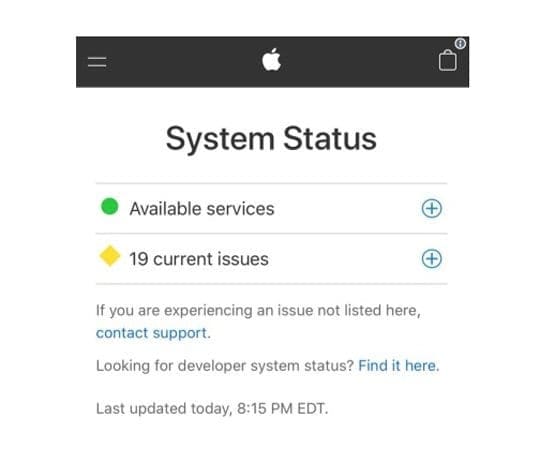
A possible cause is Apple’s own servers. So before troubleshooting, check whether iCloud is working normally (or experiencing issues) on the Apple System Support page.
To see specific issues, tap the Plus Sign (+) and scan those issues for anything listing iCloud as experiencing problems. 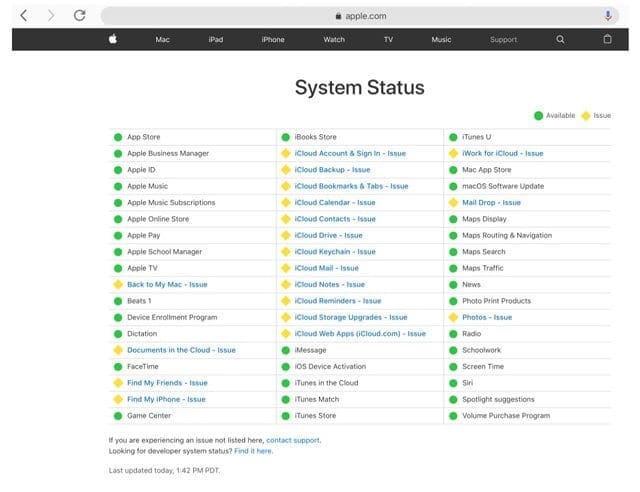
Why is my iCloud greyed out? Troubleshooting guide
Update your iOS
Make sure that you are currently running the latest version of iOS on your device.
- Go to Settings > General > Software Update to check

- Or plug your device into a computer with iTunes and select Check for Update
Check for any installed security certificates or profiles
If you use a VPN or your employer or school manages your device, it’s likely there is a device management profile or security certificate stored on your device. Apple calls this a supervised device.
When your iPhone, iPad, or iPod touch is supervised, the organization which owns your device can choose to install a configuration profile that controls what features your device has access to.
Configuration profiles files contain settings that allow an employer to restrict or limit and manage employees’ devices, including things like network settings, email and exchange accounts, passcode options, restrict access to device features, and other things.
How to check if your iPhone, iPad, or iPod is supervised
- Open Settings
- Look for a message at the top of your screen, letting you know this device is supervised and managed
- For iOS 9 and below, find the supervision message in Settings > General > About
- Tap Settings > General > Profiles (may also be called Device Management, Profile Management, or Profile & Device Management)
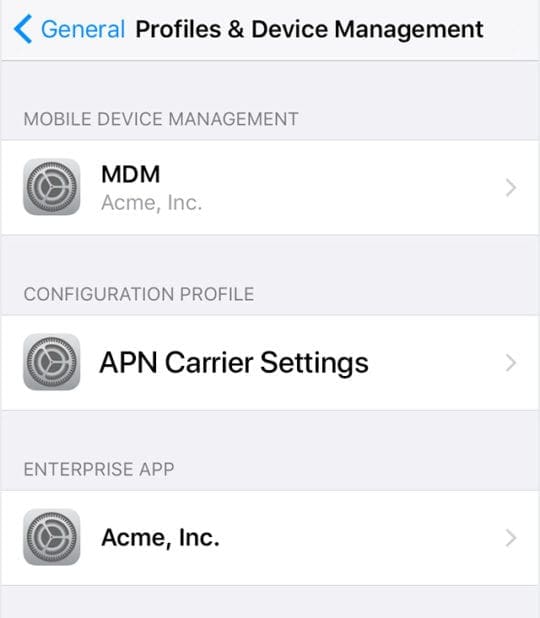
- If a profile is installed, tap on it to see its details and what restrictions are set
Even some apps install configuration profiles to monitor data–Apple removed most of these apps from the App Store but they might still be on your device.
Delete apps that install configuration profiles
- Press and hold on the app until it jiggles
- Then tap the X in the upper-left corner to delete it
- If you see the message, “deleting this app will also delete its data,” tap Delete
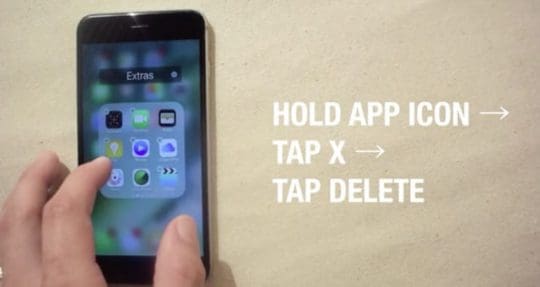
Delete configuration profiles
- Go to Settings > General > Profiles (may also be called Device Management, Profile Management, or Profile & Device Management)
- Tap the profile name
- Chooose Remove Profile or Delete Profile
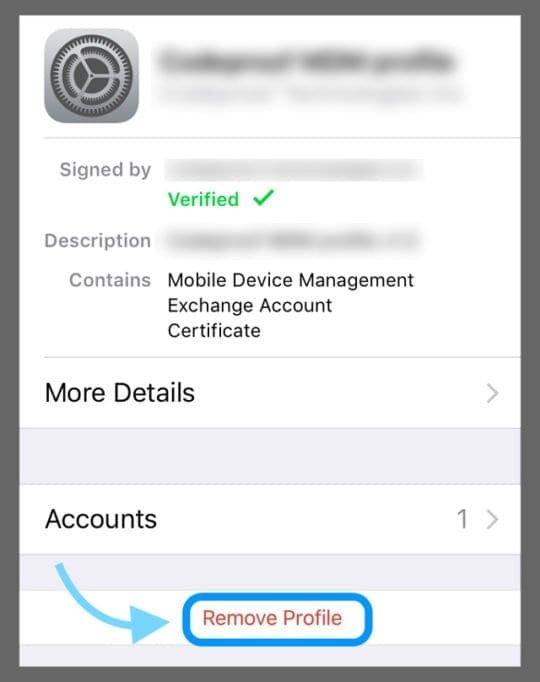
- If asked, enter your device passcode, then tap Delete
- Restart your device
Try Airplane Mode
- Toggle Airplane Mode on, wait a few moments and toggle it back off
- The easiest way to toggle Airplane Mode is via Control Center
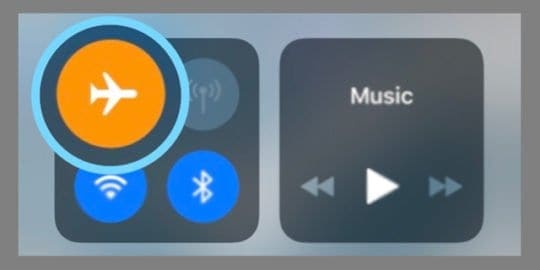
Look at iCloud Backup settings
- Go to Settings > Apple ID Profile > iCloud > iCloud Backup

- If the status says, “Restoring apps from Backup” try to cancel or wait for all your apps to restore (this may take some time.)
- Once it completes, your iCloud should work normally and no longer show up as greyed out
Check for restrictions
- It may be that Restrictions were turned on during an iOS update. To fix this, turn off Restrictions
- For iOS 12 and above, go to Settings > Screen Time > Content & Privacy Restrictions. Temporarily toggle all restrictions off and then check if iCloud is available
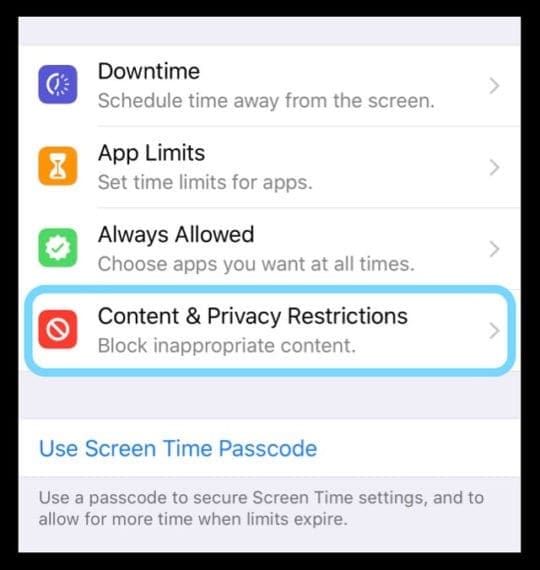
- For iOS 11 and below go to Settings > General > Restrictions, temporarily turn off all restrictions, and then check to see if iCloud is now working

- Also, check Settings > General > Restrictions > Accounts (near the bottom) and set this to Allow Changes
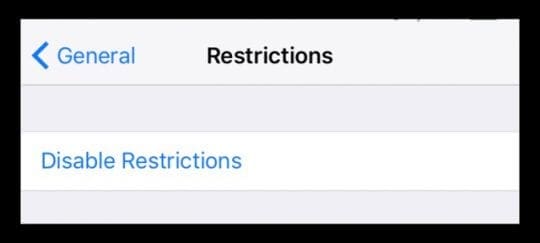
If turning off Restrictions didn’t work, try turning Screen Time (for iOS 12 and above) off temporarily
- Go to Settings > Screen Time and scroll all the way down to locate Turn Off Screen Time
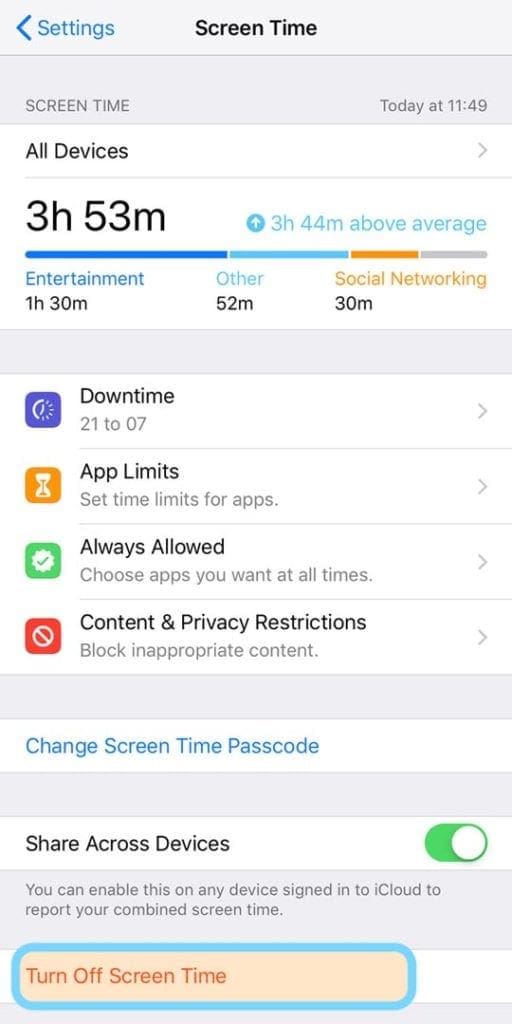
- Tap that an enter your screen time passcode to disable this feature
- If you can’t remember your screen time passcode, check out this article for tips on resetting Screen Time’s passcode
Reset your network’s settings
- Go to Settings > General > Reset > Reset Network Settings

- This action also resets WiFi networks and passwords, cellular settings, and VPN and APN settings that you used before
Reset All Settings
- Go to Settings > General > Reset > Reset All Settings

Use Reset All Settings to bypass this error - This resets to default everything in Settings, including notifications, alerts, brightness, and clock settings like wake up alarms. Resetting all settings also reverts all your personalized and customized features like wallpapers and accessibility features back to factory defaults. So you need to reconfigure these settings once your iPhone or iDevice restarts.
Log Out of Your Apple ID (if possible)
- Sometimes, you need to kick start your device by logging out of your Apple ID and then logging back in. Go to Settings > Apple ID Profile and scroll all the way down to Sign Out

- You need to temporarily turn off Find My iPhone (iPad or iPod) to sign out of your Apple ID
We hope that these tips helped you get iCloud working again. Let us know in the comments if you found something else that worked!